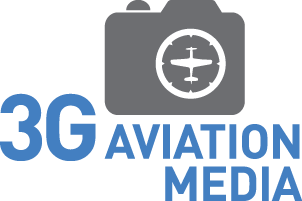Shooting in midday light? ...close the hangar doors!
Final image of Crazy Horse 2
Often we find ourselves with shooting opportunities that do not allow us to create images at the best time of day (sunrise or sunset) so we have to take what we can get as photographers. One advantage to working with aircraft is that we can use the location to help us control the light during anytime of the day.Most hangars don't have large windows so a quick solution to control the harsh midday light, close the hangar doors!
The image captured above is a shot of Stallion 51's Crazy Horse 2 TF-51 Mustang, one of our subjects from a recent 3G Aviation Media workshop that we hosted at the Stallion 51 facility in Kissimmee, Fl. After the sunrise photo sessions the aircraft were placed back in the hangar in order to be used in a lesson for lighting models. As Matt was presenting to workshop attendees in the classroom we prepared the Westcott Spiderlite TD6 constant lights that were to be used for the hands on portion of the lesson. It was about 1pm in the afternoon on a very sunny day in Florida so to have shot outside or even with the hangar doors open would have delivered not so flattering light to say the least.
In the behind the scenes shot below (I over exposed the shadows in Lightroom so you can see the light setup a little better) you can see we used (4) of the Spiderlite TD6s to light the airplane. The main light had was setup with a Westcott 7' parabolic umbrella while the (2) lights illuminating the wings used 12"x36" strip boxes.
One HUGE benefit to shooting at Stallion 51 is the hangar itself, the entire place is like one great big reflector with white walls, ceilings and floors that you can see yourself in they are so clean! There is also an American flag prominently displayed on the back wall and while the first few images looked OK with just 3 lights, Crazy Horse 2 just kinda faded into darkness and didn't really pop out of the scene. In order to make it stand out a little I placed the last Spiderlite behind the aircraft in such a way that it was blocked by the plane itself and would not be seen in the final image. We had a 24"x36" softbox on it to help spread the light out and illuminate the flag and a portion of the wall.
The final image was shot handheld with a Nikon D800 using a 14-24 f2.8 lens. Settings were ISO 800, 1/60th of a second @ f7.1 using a -2 2/3rds exposure compensation.
BTS image showing the (4) Westcott Spiderlite setup inside the hangar.

